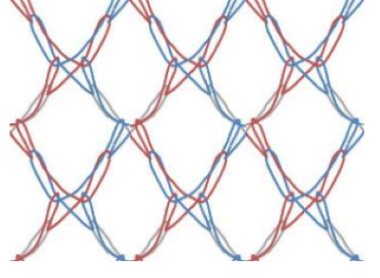Refining the Resistance to Damage (RD) score
At I2I, we set out to consolidate groundbreaking work on ITN durability to provide clarity on how long nets last in the field and how to improve their longevity. This effort built on over a decade of research, starting with the development of ITN durability monitoring protocols, linked with pioneering fabric analysis by NIRI. Their Resistance to Damage (RD) score provided a metric to predict ITN field life. Our role at I2I was to integrate extensive field data collected since then and work with our partners at Tropical Health to analyze the relationship between RD scores and real-world ITN survival. This collaborative effort allowed us to refine the RD score, improving its predictive power and bridging the gap between laboratory assessments and field performance.

Refining the RD Score for Stronger ITN Durability
Insecticide-treated nets (ITNs) are vital for malaria prevention, but their durability often falls short, with median retention in sub-Saharan Africa at just 1.64 years—well below the expected three-year lifespan. The refined RD score, developed using data from 13 ITN brands across 37 study sites in 14 African countries, more accurately predicts ITN lifespan. A 10-point increase in RD score corresponds to a 3.9-month gain in median survival, meaning high-RD ITNs could last over a year longer than lower-RD ones. This research highlights key innovation areas, including enhancing snag resistance and improving hole enlargement resistance, while also recognizing the impact of environmental and behavioural factors on net longevity. Ongoing work on the Risk Index (RI) aims to quantify these external influences to help malaria control programs optimize ITN distribution and promote durable designs.
The Resistance to Damage Score Calculator
The Resistance to Damage (RD) Score Calculator is an app designed to calculate both the RD score (formally known as the wRD) and the old RD (oRD) score. These are composite metrics used to assess and summarize the physical durability of bednets, providing valuable insights into the factors that contribute to their resistance to damage.
Future Work - A Collective Effort for Lasting Impact
This research has been a significant collaborative effort, made possible by manufacturers providing products for testing, procurers offering support and guidance, and technical partners assisting in analysis and interpretation. Looking ahead, we are continuing to explore new developments in ITN durability, including better understanding attrition and retention rates. By combining the refined RD score with the RI metric, we aim to support national malaria control programs with a data-driven approach to maximizing ITN effectiveness. Work on the RD App transitioned to IVCC in June 2025. A preprint of the RD score study, along with an app for calculating scores, is available for those interested in further details.

